Reasons Your Tomato Plant Flowers But Has No Tomatoes
As an Amazon Associate and member of other affiliate programs, I earn from qualifying purchases.
Tomatoes are not hard plants to grow. They’re really quite hardy and tenacious given the right temperature and water conditions. The hard part of growing tomatoes is knowing the plant well enough to make it grow the way you want it to grow.
Other than leaf problems, one of the most common issues gardeners have with tomato plants is a lack of tomatoes. Many of us who have grown lush bushy tomato plants have stared at them wondering, why won’t my tomato plants produce tomatoes?
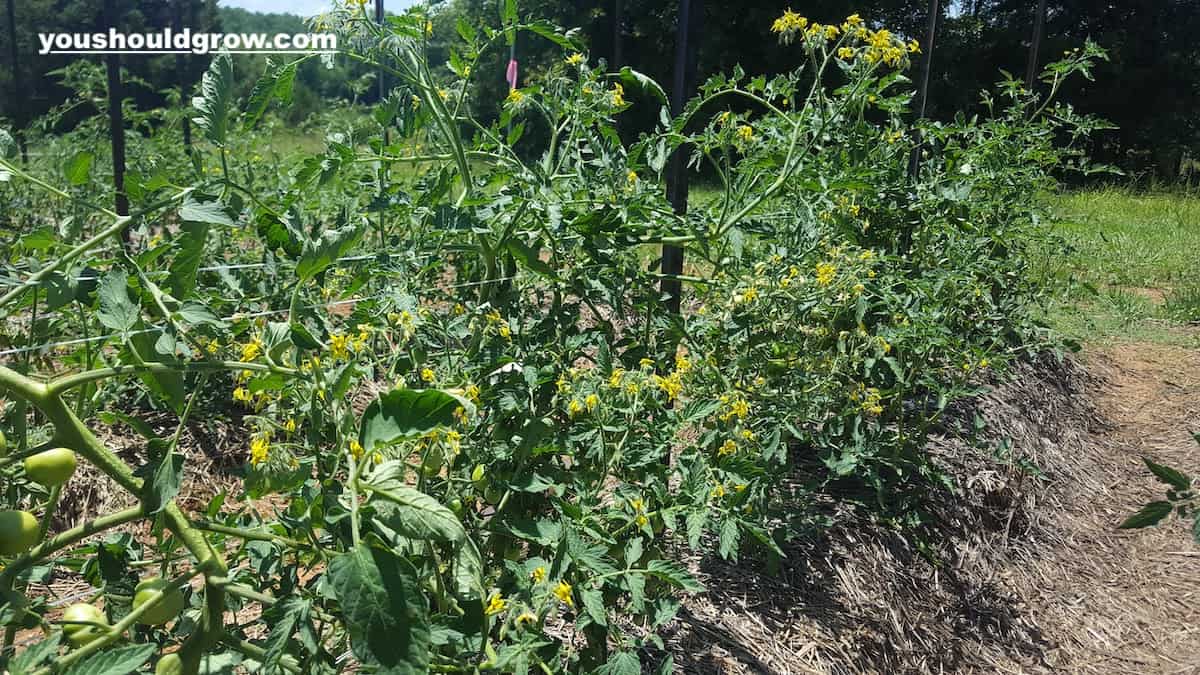
So let’s talk about reasons why a tomato plant just won’t flower and fruit and what you can do to fix it.
Why Tomato Plants Make Flowers But Don’t Produce Fruit
First off, tomato gardeners have to have patience. After you plant your tomatoes in the ground, it will typically be a couple of months before you’ll be harvesting fruit. Every variety of tomato has a different time to fruiting which can be 90 days or more.
But how long before a tomato plant flowers? Tomato plants usually flower pretty quickly after planting, but those first flowers may not set a lot of fruit early in the season. This can be normal and should improve as the weather warms up. Can tomatoes flower too early? Only in the sense that low nighttime temperatures can affect their pollination.
Tomato flowers are complete flowers which means they have both a male part and a female part. This is what makes them self-pollinating, so you do not need pollinators to make tomatoes from flowers. But many environmental conditions, like relative humidity, can cause problems with the flower’s ability to self-pollinate.
A tomato will grow from the female part of the flower, and takes several weeks to ripen – depending on the variety. It’s really hard to be patient waiting for the fruit to ripen on your plant, but the first thing to do is to search your variety so you know the typical time to fruit for your particular tomato variety.
If your plant is giving lots of flowers but not producing tomatoes, then it’s time to consider one of these reasons for poor production of your tomato plants.
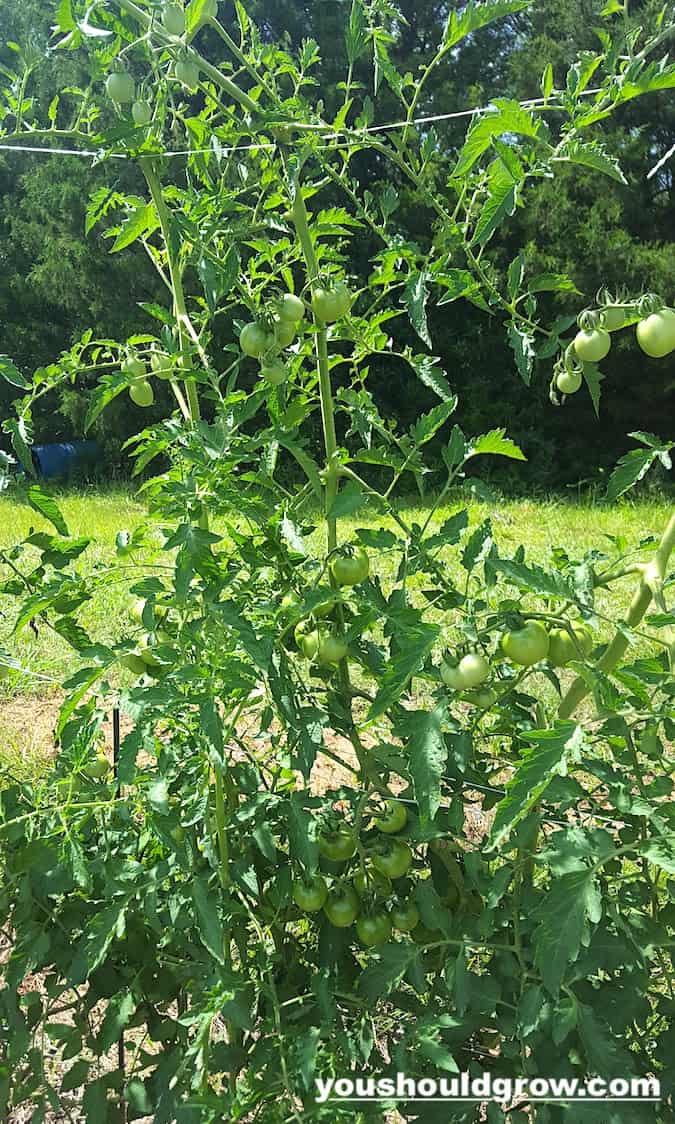
Extreme temperatures cause lack of fruit setting
A tomato plant will grow in a wide range of conditions, but temps on the extreme side can impact the number and quality of fruit your plant makes. If your nighttime temperatures are dropping into the 50s or daytime temperatures are in the 100s, then you’ll have issues with flowers being able to self-pollinate.
You may even see the flowers falling off the plant (aka blossom drop) without setting any fruit. Extremes in humidity will have a similar effect causing pollen to be too sticky or not sticky enough to fertilize the pistil. If temperature and humidity are affecting your tomato fruit set, you might just have to wait for the weather to become more cooperative.
We usually plant tomatoes a week after our last frost date, but it’s still going to be too cold to expect a lot of fruit just yet. You may even want to place cold frames and frost protection over your plants in the first couple of weeks. If you know your area gets hot spells in the summer, plant your tomatoes where they will receive some afternoon shade or try growing under a shade cloth. In areas where there are no frost dates, you may have better luck planting your tomatoes in the fall as the hot weather is too much for tomato plants.
Other environmental causes for lack of flowers on your tomato plant include storms and strong winds that displace small blooms, fungal diseases present in the soil, and pest stress.
Water stress can cause blossom drop
One thing my husband used to say about gardening is to make sure I kept my watering in the Goldilocks zone…not too much and not too little but just right.
If your plants are having periods of drought and flooding, they’ll often respond by dropping their flowers. It’s best to water tomato plants evenly and regularly. Drastic changes in their watering schedule can lead to tomato fruit problems.
When possible, install drip irrigation at the base of your plants and soak the soil only when necessary. Depending on your environment, you may need to water every day or only once a week. Knowing how much to water your tomato plants is really a practice in observing your garden and getting to know the specific conditions that affect your plants.
Signs that your plant needs to be watered include dry soil (obviously), curling of leaves, sagging stems, and suckers that flop or fall over.
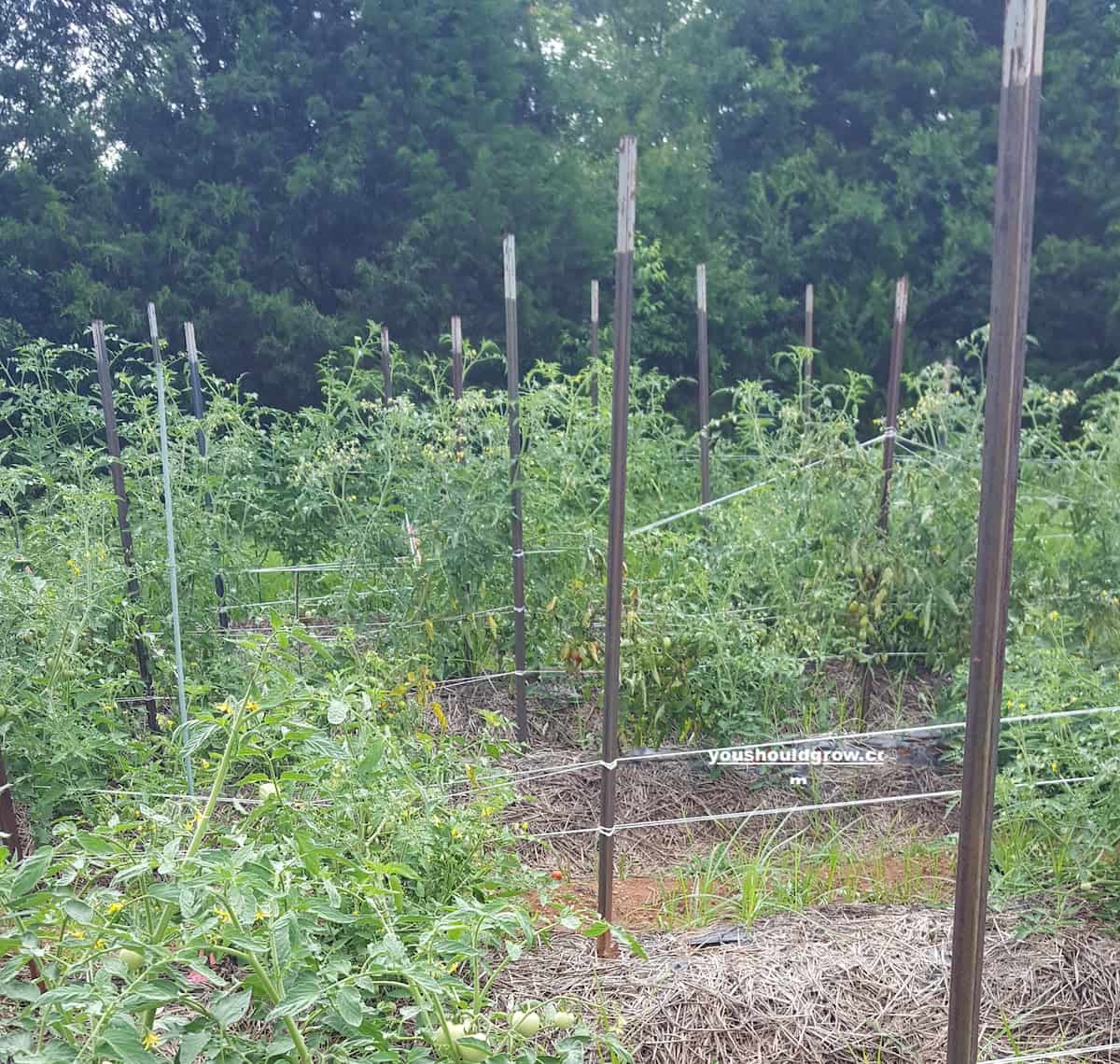
Pruning will help improve flowering and fruit set
Note that pruning is not recommended for determinate plants. Learn more.
Left to their own devices, indeterminate tomato plants can become enormous sprawling vines. Some gardeners prefer to grow their plants this way and have great results. But in my experience, letting them bush out leads to fewer and smaller fruit. Think about it as if you are a tomato plant, what is your purpose in life? It’s to reproduce by making tomatoes.
So when life is good and there’s plenty of space and nutrients to grow, then the tomato has no motivation to make fruit. It can continue to vine out and take up as much space as it needs. But if there’s any indication to the plant that it won’t be able to grow, then it will shift gears and start making more fruit. So I like to prune my indeterminate plants down to one or two vines.
This not only encourages it to put more effort into fruiting, but it removes some of the bulk of the plant and allows me to watch for issues like pests or disease.
Check your fertilizer for excess nitrogen
If you’re unfamiliar with the basic nutrition needs of plants, here is a great explanation and guide to using fertilizer. But in short, nitrogen encourages leaves to grow and phosphorous encourages fruit set. So if you’re using a fertilizer that has too high nitrogen concentration or lacks a full spectrum of nutrients, then your plants may not be setting as much fruit as you’d like.
I always prefer to use organic fertilizer because it’s much easier to get the dosing right. Synthetic fertilizers are often high in nitrogen which can lead to burning leaves and blossom end rot. But even if used appropriately, they can cause a low fruit set because there is too much nitrogen in relation to potassium.
Look for an organic fertilizer that has equal amounts of nitrogen and phosphorous (5-5-5) or has less nitrogen and more phosphorous (2-6-4). For a more detailed explanation of what those numbers mean, read this article.
Monitor for signs of pests and/or disease
There are many fungal, bacterial, and viral diseases that can affect tomato plants. Most often these are present in the soil in your area, and they are very hard to eradicate. The best thing to do is to inspect your tomato garden several times a week if not daily. Signs of infection that can stifle tomato production include wilting, stunted growth, spotted, yellow, or misshapen leaves.
It’s frustrating to find disease in your plants, but there are only two options once a plant is infected. Let it grow or pull it out. By the time you see infection, there’s not much you can do about it. Except in the case of lack of water, always pull out wilted tomato plants and get rid of them asap. Some forms of wilt will spread quickly if not removed, and sometimes even then it’s not enough.
For most diseases/infections, your plants will either tolerate the disease and grow through it or they’ll succumb to the stress and die. Any treatment you apply is really to prevent spread of the disease to other plants, although this is often an effort in futility. Tomato varieties often list what we call a disease-resistance package, and it’s recommended to choose plant varieties with resistance to diseases common in your area.
Heavy infestations of pests like aphids or spider mites can put additional stress on a tomato plant that can have an impact on fruit set. How you decide to implement pest control on your plants is a personal decision. On our farm, we like to use organic treatments like diatomaceous earth, spinosad, and Bt. If it gets really bad, we will use Pyganic but this is a very broad spectrum organic pesticide that we use only sparingly.
Should I remove flowers from tomato plants?
Generally, no you do not want to remove flowers unless you are trying to decrease the number of tomatoes you’ll get.
I’m sure there are some people who do this in certain circumstances, like early in the growing season. Why let the plant waste energy on flowers when it’s too cold to set fruit? I don’t know how much difference it would make in future fruit set, but I could understand the reasoning. Likewise, I know some people limit the number of fruit on a plant to encourage the fruit that does set to be larger/healthier. However, this is not something we do or recommend doing for tomatoes.
That’s why a tomato plant flowers but no fruit
With the exception of weather and disease, it is possible you can redirect your plant’s growth to encourage more fruit set with the above tips. If you’re new to gardening, then running through this list will help you learn to observe and respond to your plant as needed. Experience is really the biggest route to success with growing tomatoes, so even if you didn’t get a great crop this year, try again next year and the year after that. You’ll get better and better at it and enjoy it the whole time. Happy Gardening!


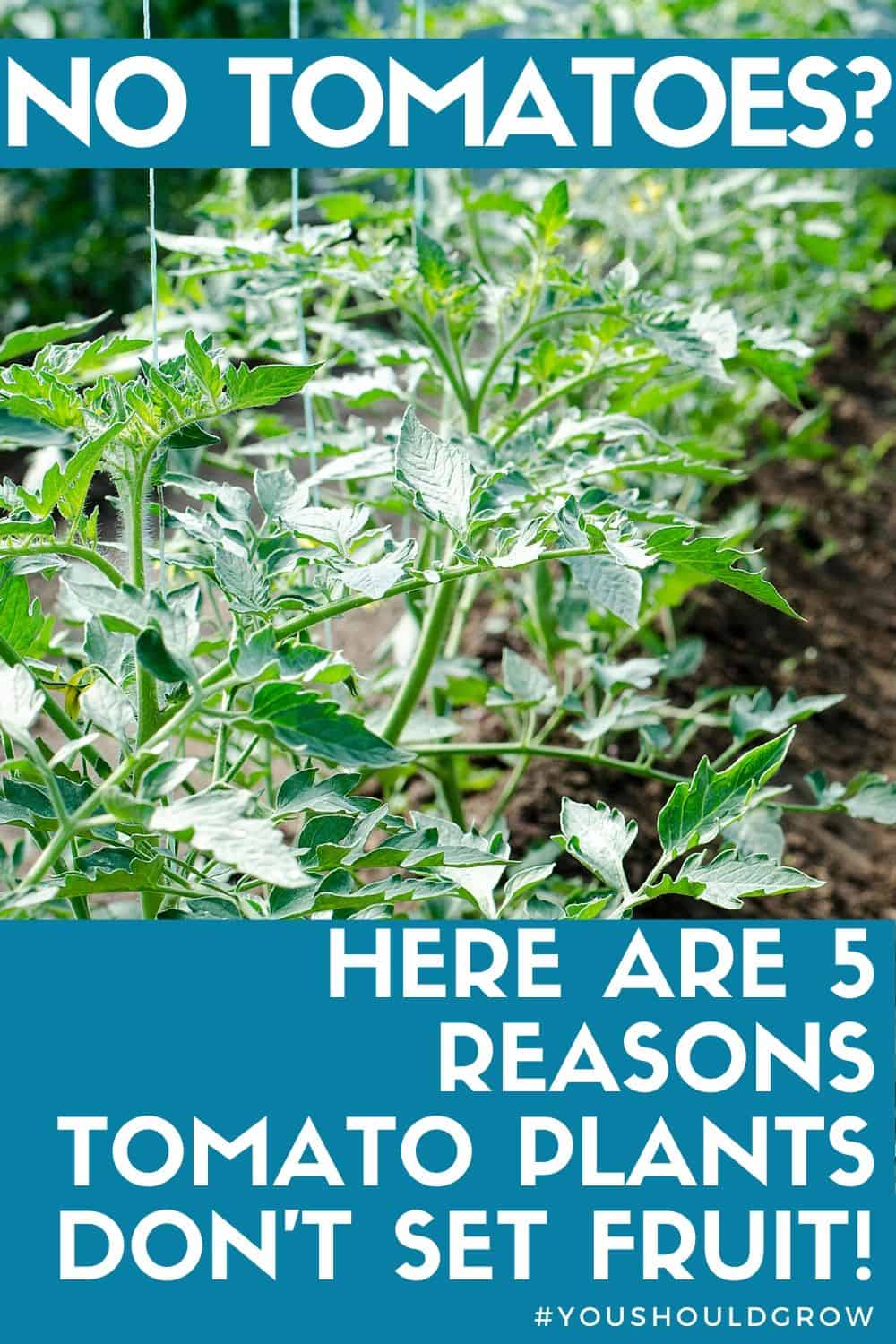
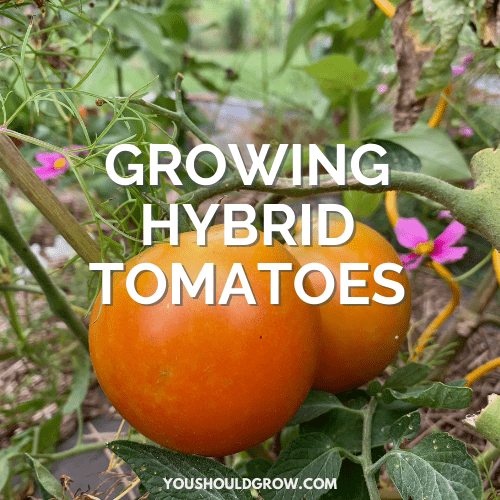
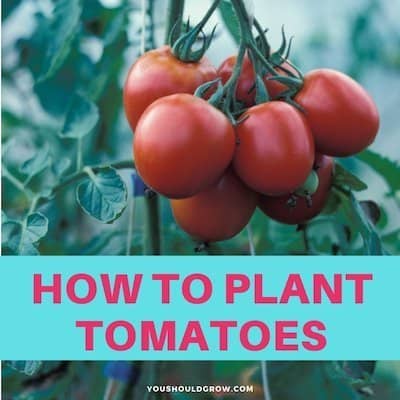
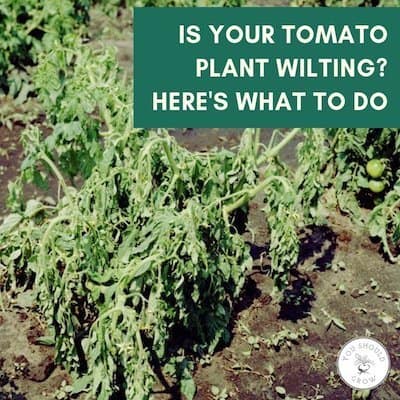
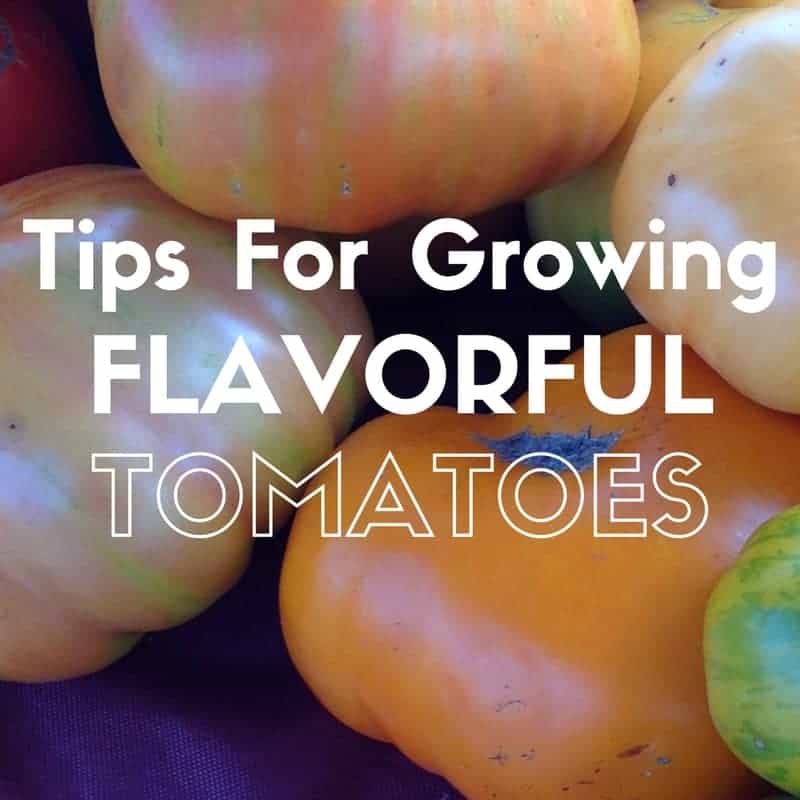
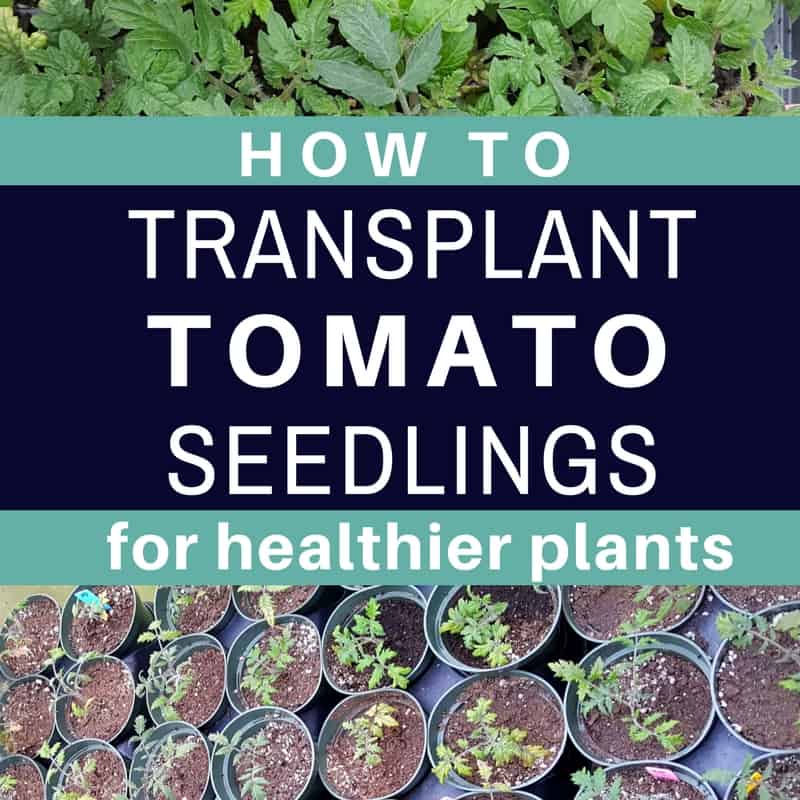
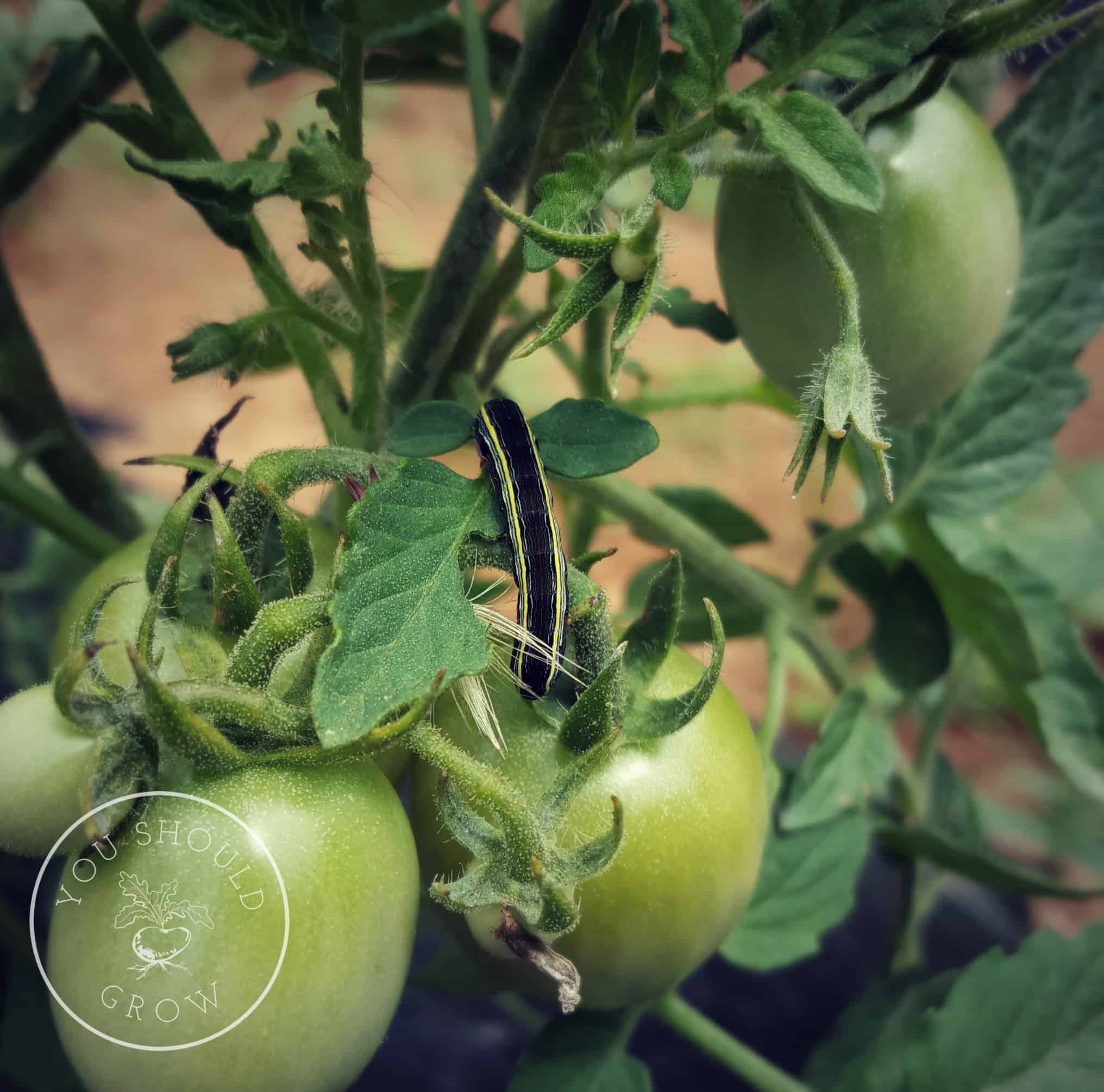
There appears to be little tiny eggs on the leaves in patches. Those areas the leave looks thin
we have a really short growing season where we live in Canada…i have two tomato plants in pots in my sunroom, and they both have had lots of flowers for going on at least 3 months now, but only 4 tomatoes on one and 1 tomatoe on the other (Grape and Cherry)….cool nights of 40’s-50’s and only recently really warm temps up to the 80’s…of course, warmer still in the sunroom…any suggestions? they are both really tall now, maybe too big for the 10″pots but can’t grow them outside w/our short growing season in the mountains